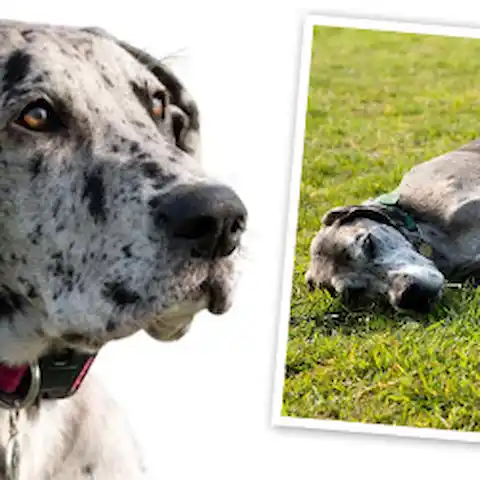Great Dane Breed Profile

KC Group Working
Size Large
Weight Minimum weight over age of 18 months: Dogs 54kg; bitches: 46kg
Height Minimum height over age of 18 months: Dogs 76cm; bitches: 71cm
Average lifespan 8 years
Good with children? Unknown
Good guard dogs? Yes
Moulting level Low
Grooming Light
Exercise requirement Lots
Jogging partner Short runs
Colours Brindle, fawn, blue, black, harlequin, and mantle are the standard colours
Great Dane Breed Profile
Health
The following conditions are known within the breed:
- Heart problems.
- Hip dysplasia.
- Glaucoma.
- Gastric dilatation volvulus (bloat).
- Cervical spondylopathy (wobbler's syndrome).
Great Danes are prone to cardiomyopathy, which is the deterioration of the heart muscle. The condition is life threatening.
Temperament
- Intelligent and dignified.
- Very tolerant and quite sensitive.
- Devoted and loving.
Lifestyle
- Contrary to general belief, you don't need a huge house to own a Great Dane. As long as he is well exercised and comfortable he will be happy.
- Great Danes want to spend time with their families. They are not suitable for those who work all day, but can be left for a few hours.
- They show a tolerance and affection towards children, although interactions should be supervised.
- They get on with other pets.
- Puppies need short, structured exercise two or three times a day. Prolonged exercise can damage their rapidly growing bones.
- Adult Great Danes need around 40 minutes of exercise a day, but will be happy to go much longer.
Trainability
- Great Danes are eager to please making them relatively easy to train.
- It is important to start training and socialisaion early as any problems can be compounded because they are so large.
- They can take part in many dog activities. There are even some groups specifically for large breeds.
General care
- The Great Dane's short coat needs grooming once a week.
- These dogs tend to show their age around seven years old. They will value routine more than ever and tend to be more affected by the cold.
Pros
- Faithful and tolerant.
- A good guard dog.
- Eager to please.
Cons
- Short life expectancy.
Did you know?
- Great Danes were originally used as hunting dogs to catch wild boar.
- The breed was introduced to Britain in 1877.
- They make excellent watchdogs and guard dogs.
